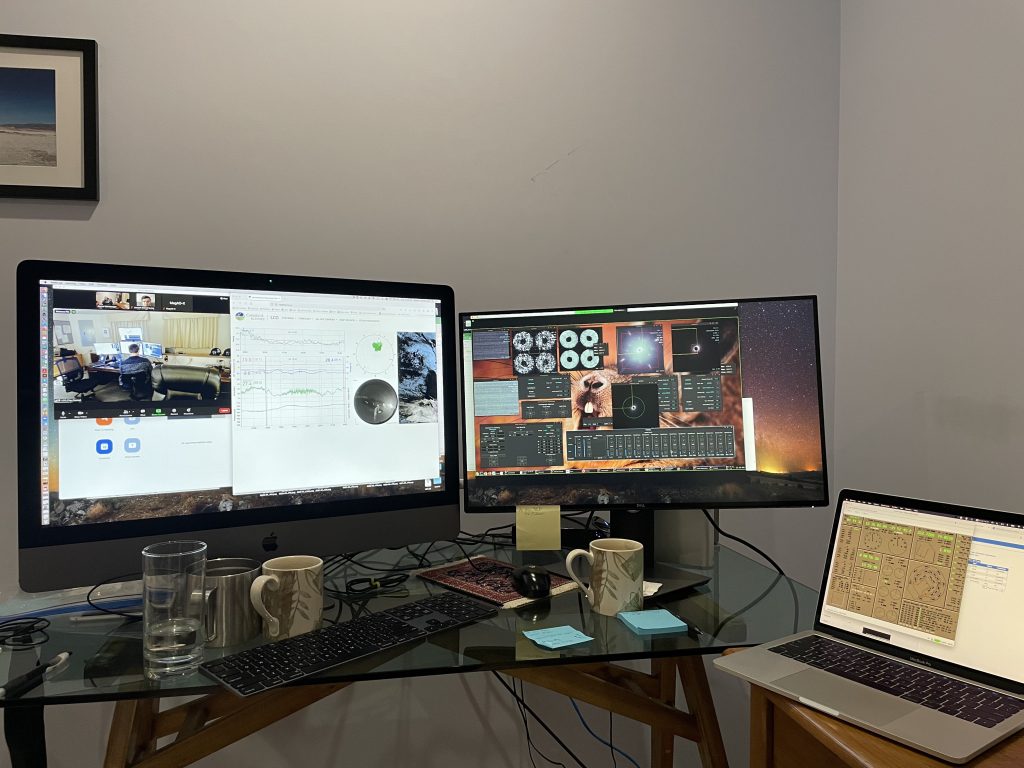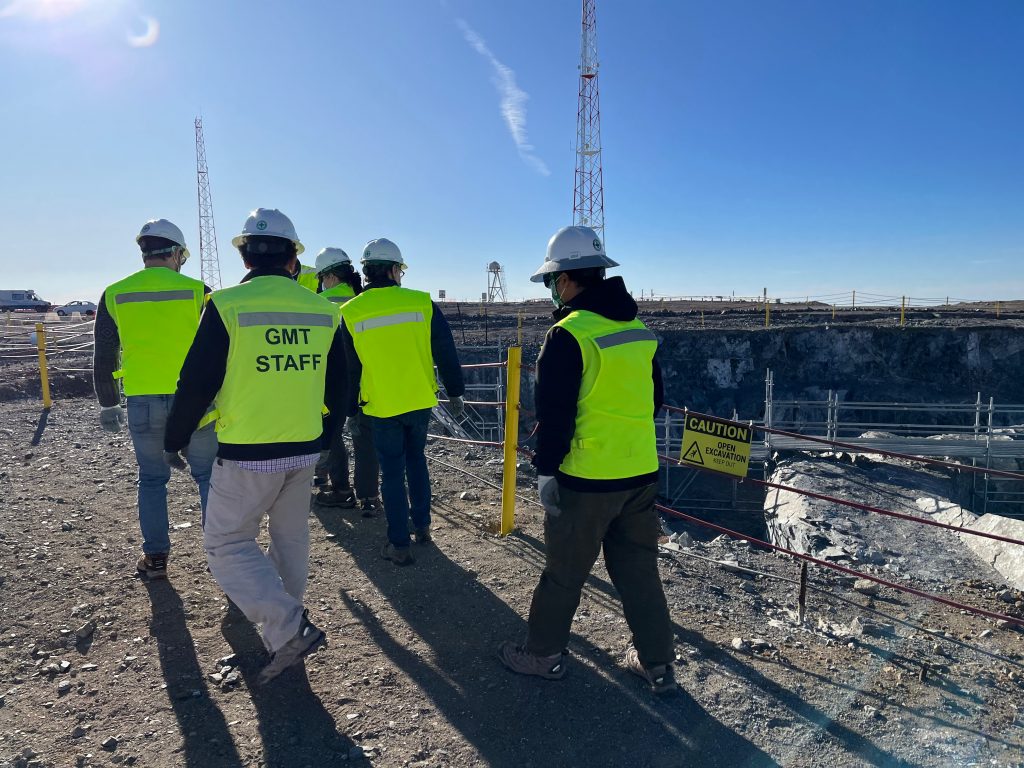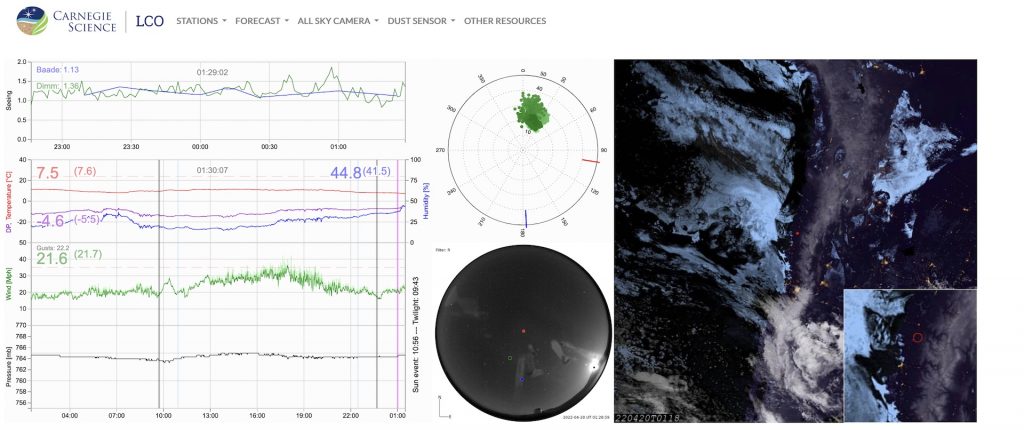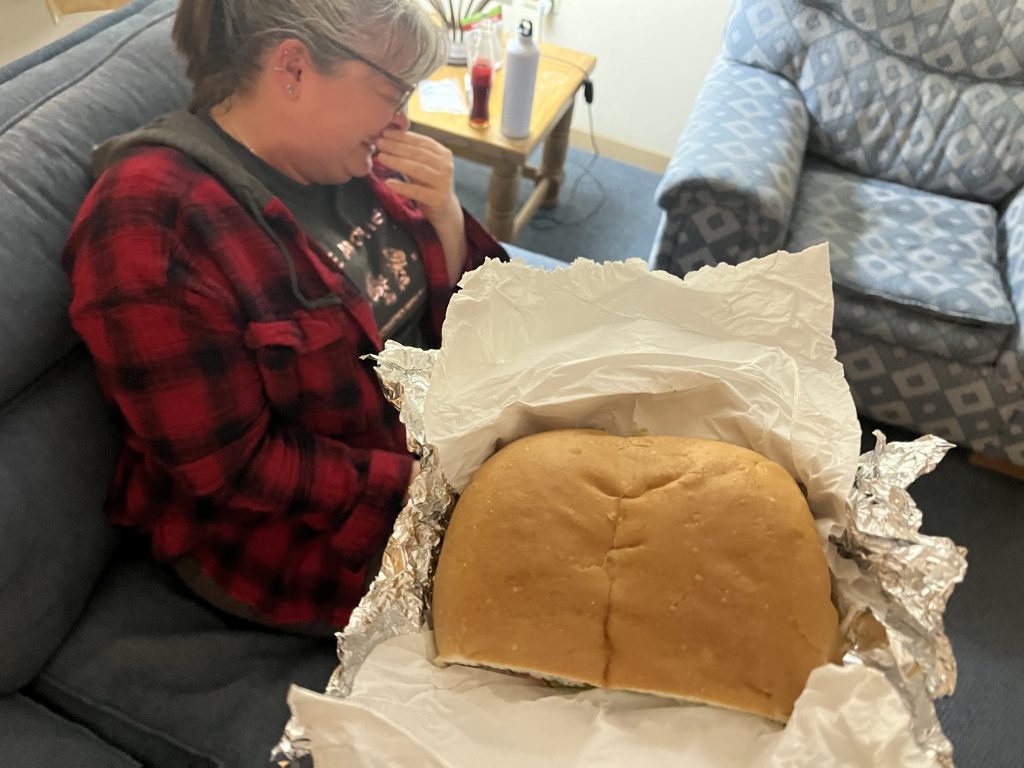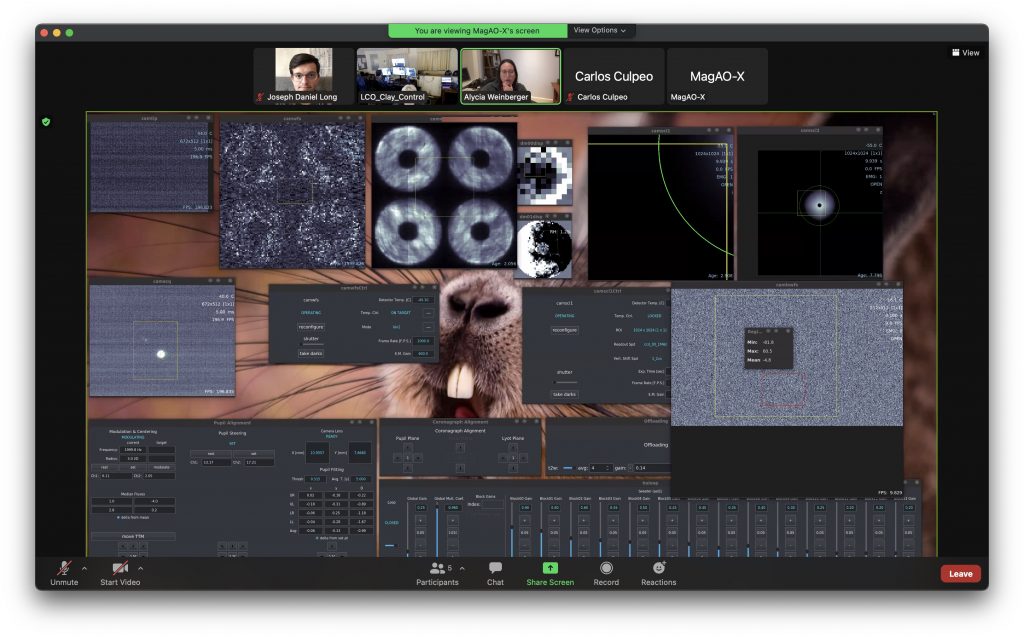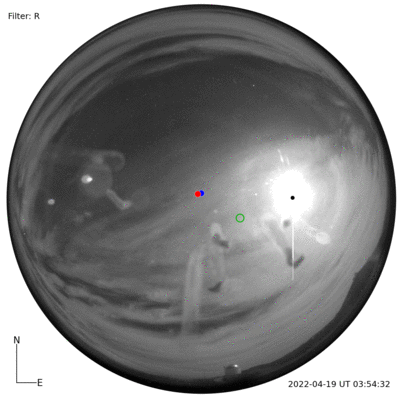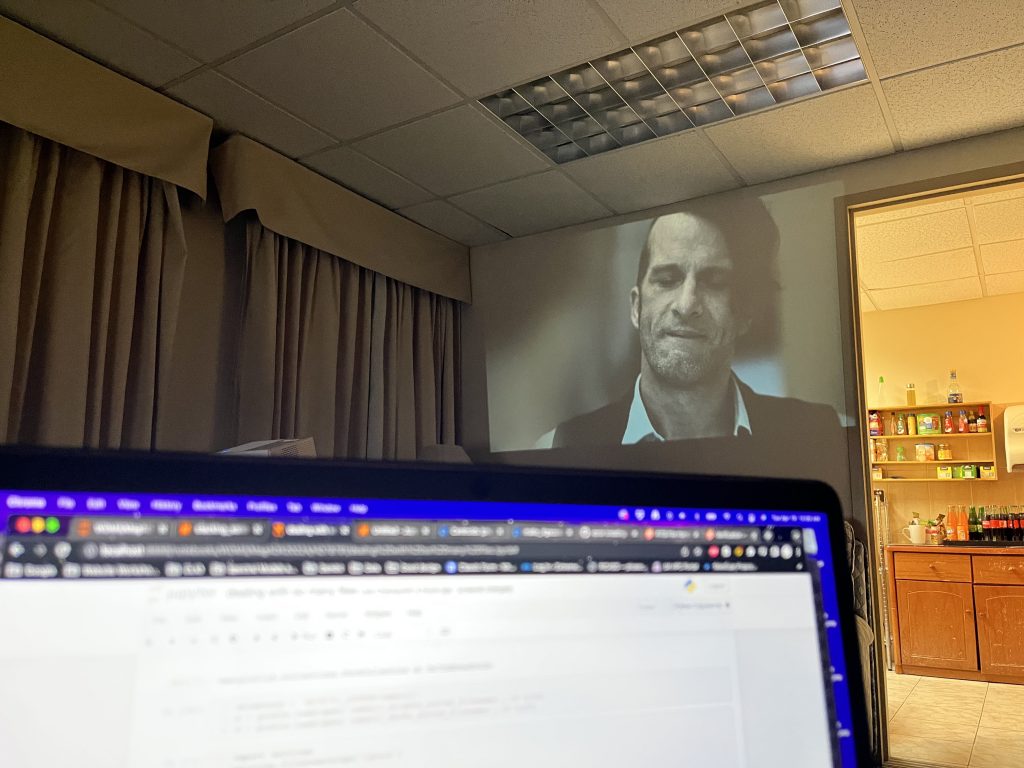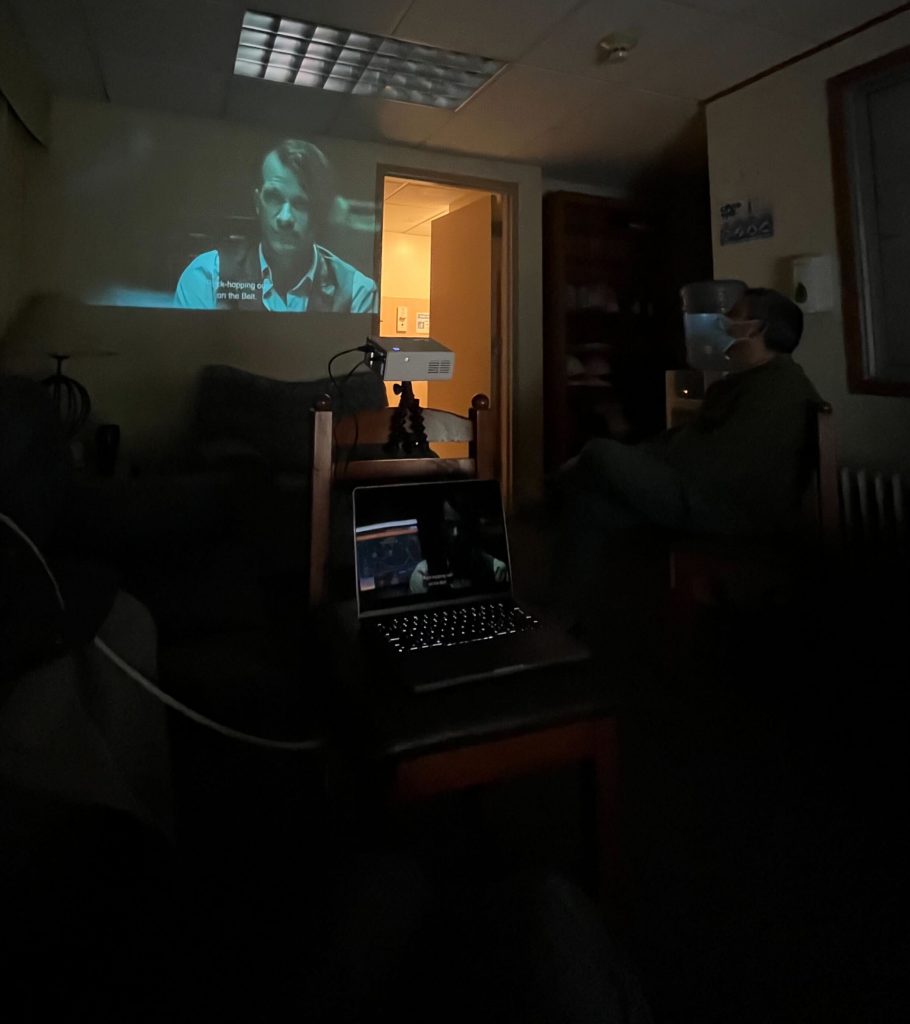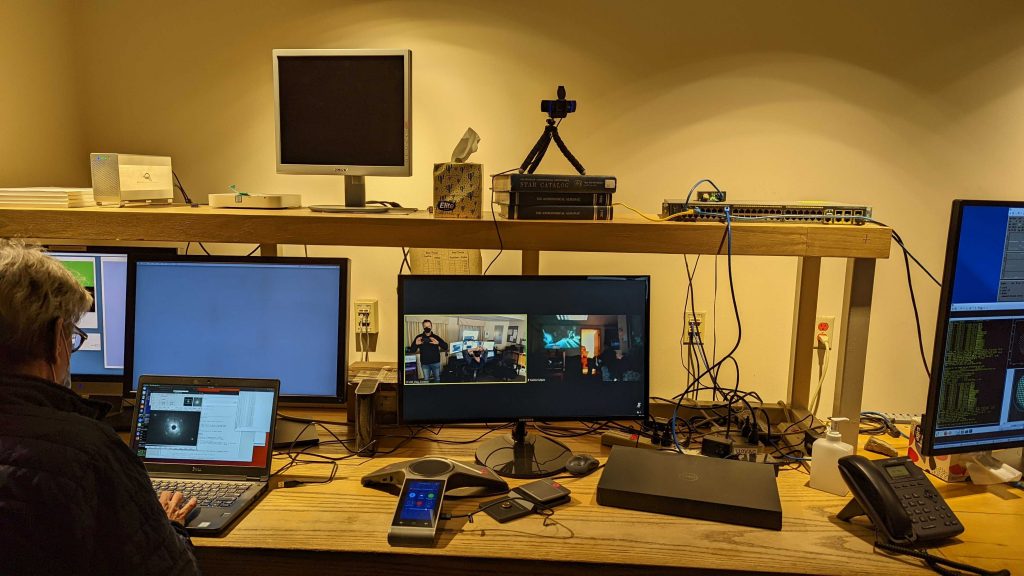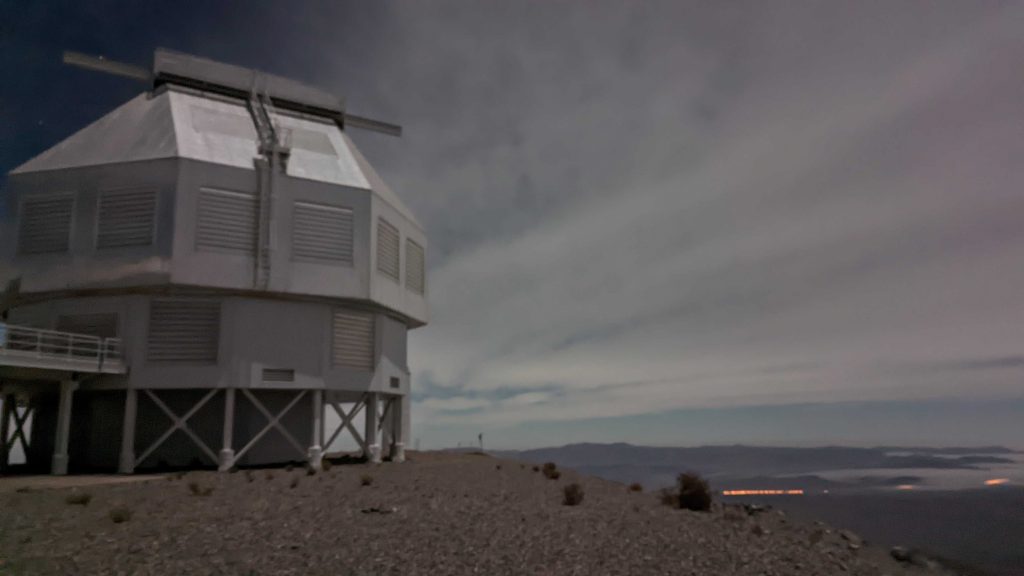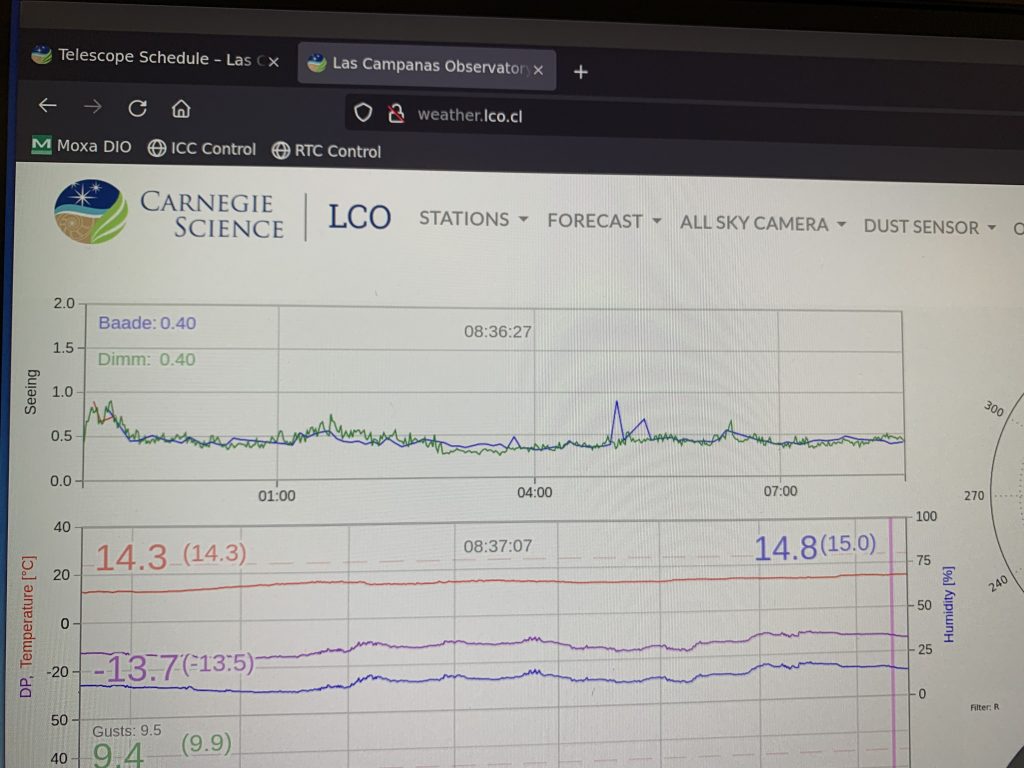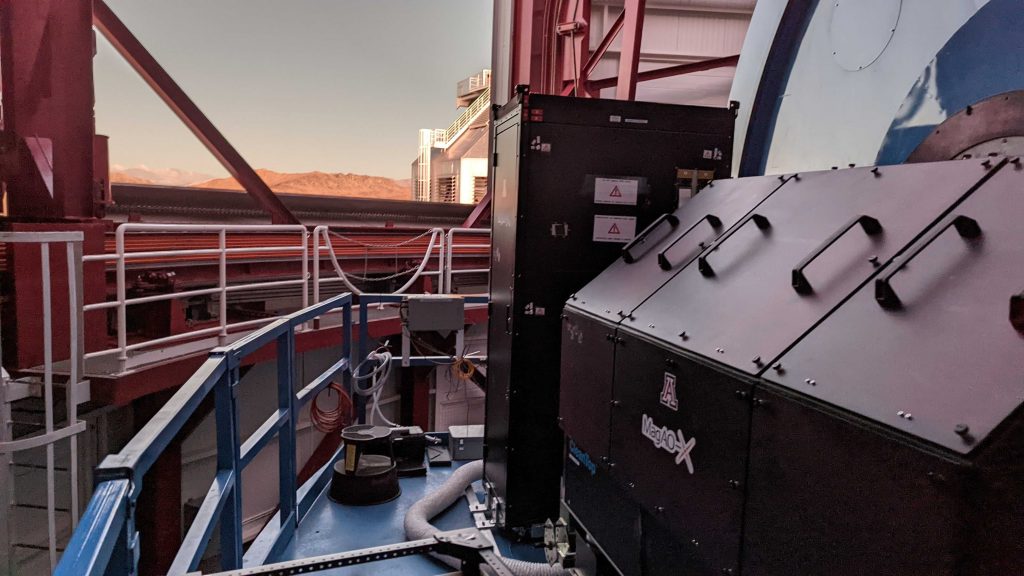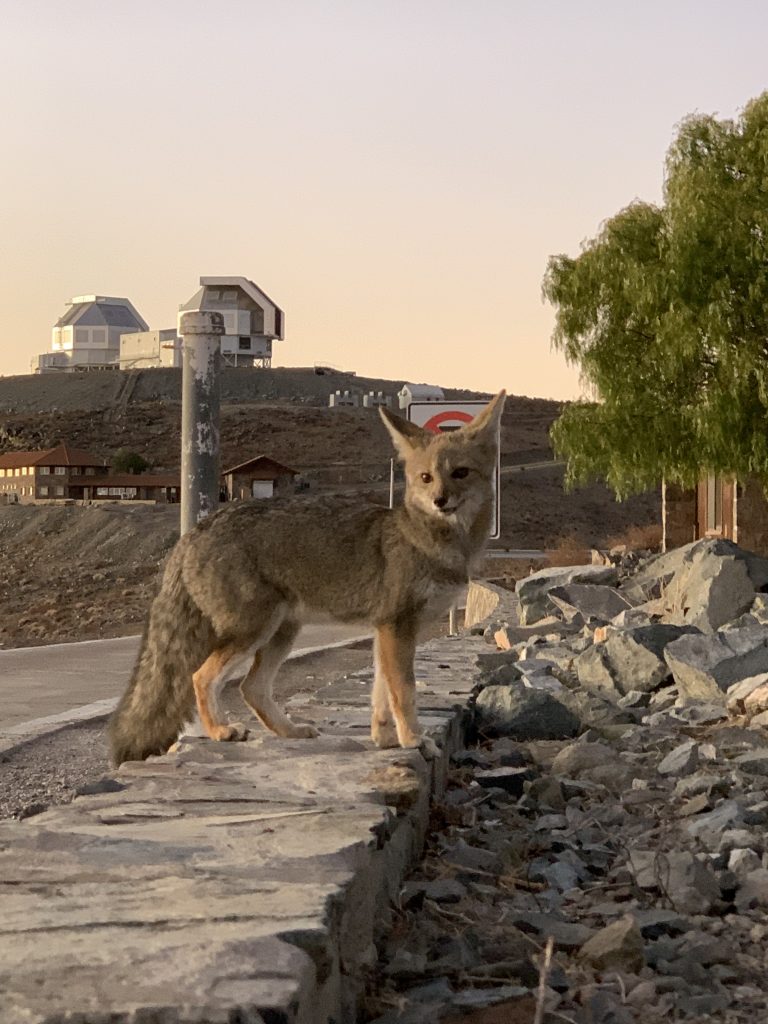Tonight was split 50/50 between Dr. Weinberger and Dr. Haffert. Once Alycia’s observations were done, Sebastiaan started commissioning his extreme, visible, high-resolution, MagAO-X-fed, integral field spectrograph VIS-X. There was a little bit of panic initially when the laptop pinch-hitting for “VIS-X instrument control computer” wouldn’t talk to the camera, but Sebastiaan shimmied up the ladder onto the instrument platform to debug.
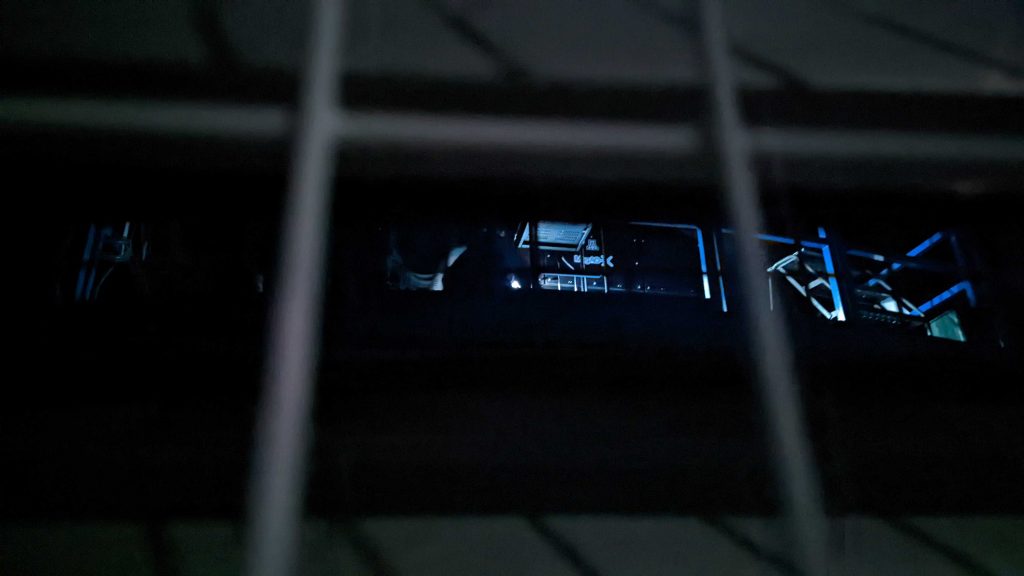
It turns out that laptops are just like dogs. If you’re cold, they’re cold. Bring your laptops inside. (This also goes for post-docs.)
Once everything was working, he was rewarded with more mini-spectra than you can shake a stick at.
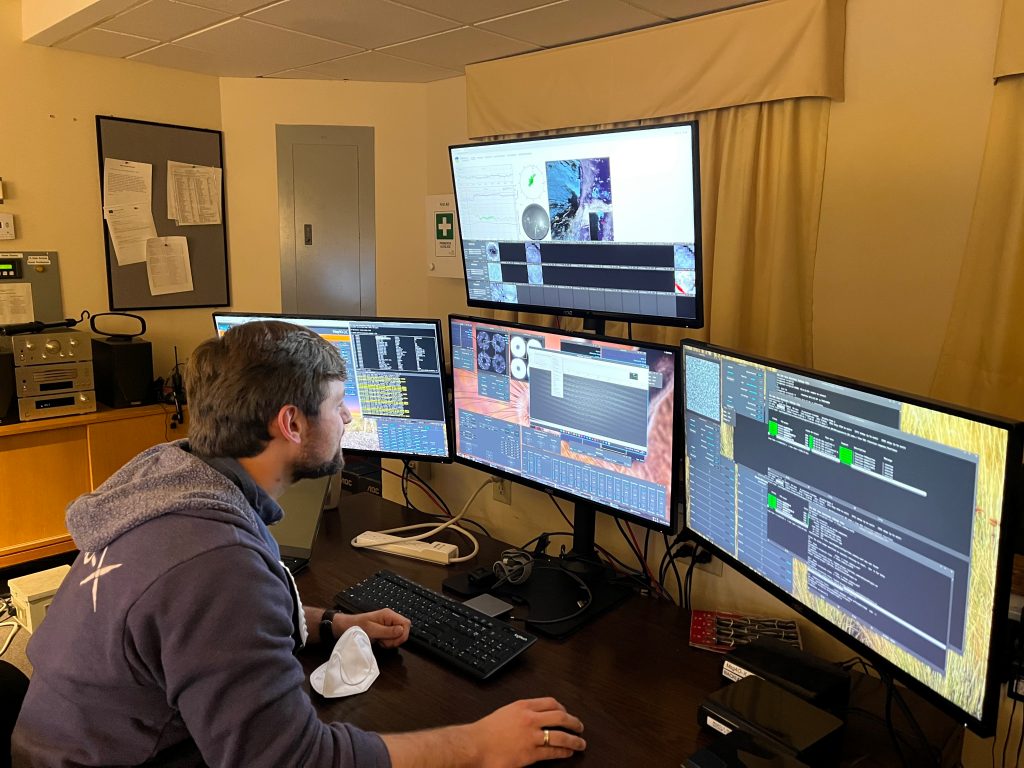
And, since the observatory advanced to “phase 3” of their COVID plan, we were able to have everyone in the control room for it!
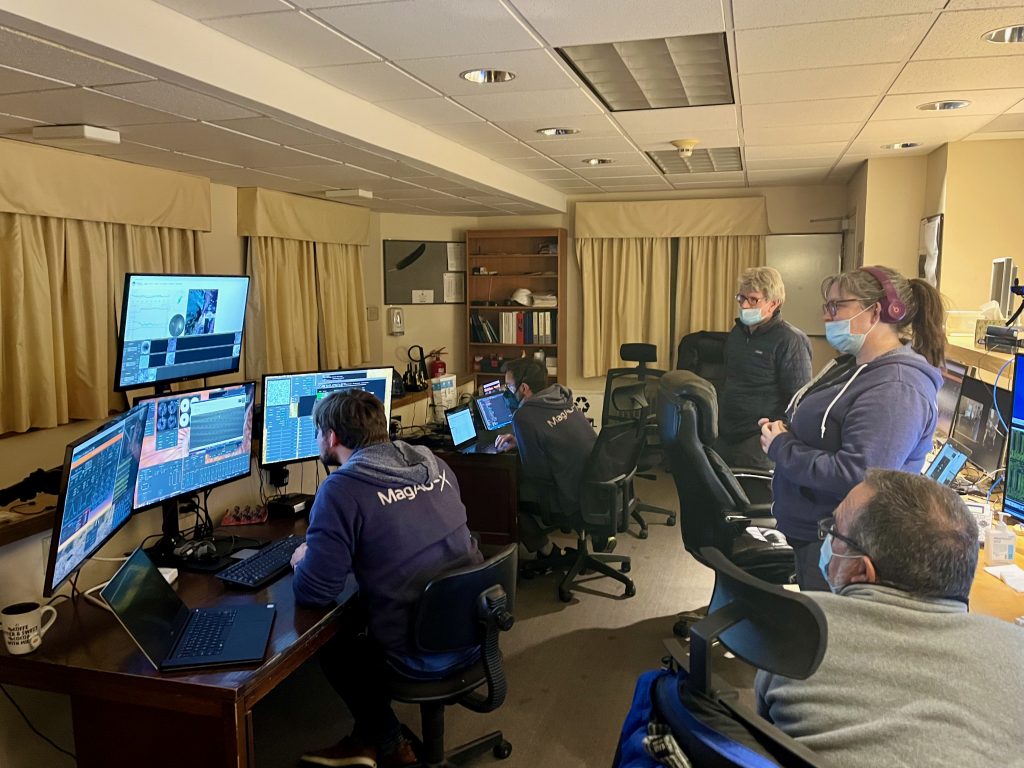
Meanwhile, I was working on some astrometry with a field in Baade’s window that we imaged earlier in the run. (This very blog introduced it to the world as a calibration field for high contrast imaging, but for some reason the blog post doesn’t get the same number of citations as the paper by the GPI folks.)
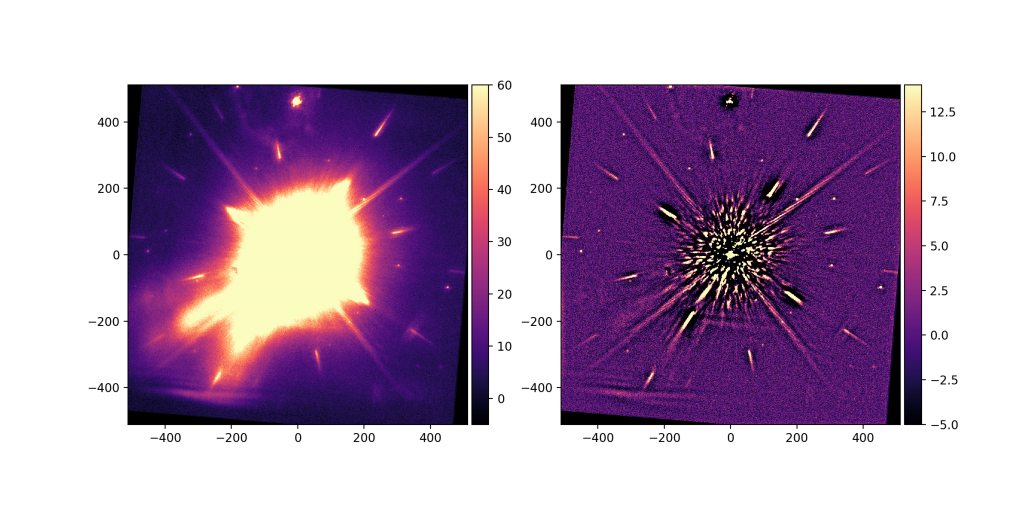
We didn’t get a lot of field rotation to allow starlight subtraction this time, so the unsharp mask is the best way to see the stars hidden in the glare. We’ll be able to use them to calibrate the scale between angular coordinates on the sky and pixel coordinates in the instrument, using the measurements others (like our friends at GPI) have made of the field.
Song of the Day
The most famous spectrally dispersed album in music history is obviously Pink Floyd’s Dark Side of the Moon. (Plus, it has a celestial body in the title.)
Money is the main thing Sebastiaan needs to make VIS-X even more extreme, so thank goodness he’s got some coming. Stay tuned for 2022B.
Quotes of the Moment
We have not been logging memorable quotes day-by-day because, frankly, we’re all extremely tired by the time it’s time to blog. But here are a few that have been queued up for publication over the last weeks.
on the appreciation of viscacha visages
“That god damn viscacha shows up in every picture no matter what we do.”
“This is so exciting for visitor 3. Visitor 3 gets to go down the road like the big cars!”
on the trip to GMT
“Oh gosh, we might as well be licking each other up here!”
on infection control measures
“At some point, some of us will actually die from lack of sleep.”
on sleep
“I want there to be a cat.”
on the Magellan tertiary mirror
“But seven… seven is a thing.
on mirrors
“He doesn’t know that if he jumps in my lap I’ll give him anything he wants.”
on foxes
“Stop calling it second light!”
on second light
“Oop, that was a shrimp-and-pickle burp.”
on local dietary habits
“Gender is such a complicated thing.”
on the subject of connector pass-throughs
“Justin, are you on your nuts? Everyone check your nuts. [giggling ensues] There’s nothing funny about that. This is a professional environment here.”
on nuts
